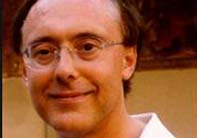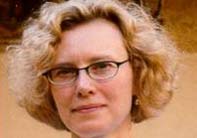
There was a vast array of health care options because the practice of medicine was not seen as an exclusively professional business - anyone could do it.
Physicians with university degrees treated internal illnesses.
Surgeons, who learnt by apprenticeship, treated wounds, fractures and external illnesses.
Apothecaries made and sold medicines, barber surgeons bled patients and pulled teeth.
Herbal remedies were administered by those who had learned the tradition orally - often harnessing the powers of natural magic. Some were licensed to practice their skill, many were not.
Women were found amongst the licensed practitioners.
They were not allowed to go to university, but a physician might teach his wife or daughter, who could then practice on licence. Large numbers of women were in fact involved in healing - making medicines, setting bones and treating small wounds - but nearly always without the status of men.
95% of unlicensed practitioners were women. Increasingly, unlicensed women found themselves on the edge of society, and towards the end of the Renaissance more and more were put on trial for practising witchcraft.
Evidence
 Foucault called Renaissance hospitals "antechambers of death", and historians have argued that the Christian Church stunted the growth of medical science.
Foucault called Renaissance hospitals "antechambers of death", and historians have argued that the Christian Church stunted the growth of medical science.
New research by John Henderson overturns this view. He reveals what it was like to be an 'Italian Patient' and shows that there are remarkable similarities to health care provisions today. Katherine Park has shown that at the same time the practice of autopsy was in full swing with the sanction of the Church.
In the late medieval period hospitals were built in Florence as charitable institutions, to provide food, lodging, spiritual fulfilment and medical care for the poor. During the Renaissance hospitals came increasingly to specialise; some continued to look after the poor, others became orphanages. Santa Maria Nuova looked after the sick poor.
Thinking History
What do Renaissance hospitals tell us about? Not just about medicine, but also about concepts of the body to which that medicine was applied, the destiny of the soul (should the medicine not work), the priorities of the society from which the funds for the treatment were forthcoming (or extracted).
But the people who documented the work at the Florentine hospital of Santa Maria Nuova were not writing for us, a curious posterity; we can delight in the astonishing completeness of their records but must still be very careful about how we interpret them.
In the other sections we will look at two pieces of evidence and invite you to have a go at analysing them critically.
We can begin to answer the questions posed here from the evidence in the programmes; but answers tend to prompt more questions and you may like to pursue these through the books below or with a course on the Renaissance with The Open University.
The full story
Further reading
Piety and Charity in late Medieval Florence
J. Henderson (University of Chicago Press, 1997)
The Greatest Benefit to Mankind: a Medical History from antiquity to the present
R. Porter (Harper Collins, 1997)
The Body Emblazoned: Dissection and the Human Body in Renaissance Culture
J. Sawday (Routledge, 1995)
Doctors and Medicine in Early Renaissance Florence
K. Park (Princeton, 1985)
Our experts
Meet the team who helped shape our exploration of health in Renaissance Italy
Dr John Henderson

John Henderson fell in love with the city of Florence at the age of 18. The beauty of the city, its extraordinary collections of art, the friendliness of the people and excellent food and drink, have meant that first impressions have lasted. He not only lived in Florence for over three years, but returns every summer to do research.
His work on Florentine hospitals led him to co-found the International Network for the History of Hospitals in 1995. He has been a member of the Scientific Committee of the Commune of Florence initiative 'La citt e la salute' which organised a major exhibition in the Palazzo Vecchio on the history of Florentine hospitals.
He is now a member of two more committees in Florence, the first organising a long-term research project on the history of the Hospital of Santa Maria Nuova; the second is as one of the founding editors of an Italian journal about the history of medicine, Medicina e Storia.
The research featured in The Italian Patient is being written up by John to be published by Yale University Press under the title The Renaissance Hospital in Florence and Italy. He lectures at the University of Cambridge on subjects such as the 'Black Death in Medieval Italy' and 'Society and Culture in Renaissance Italy'.
 Professor Katherine Park
Professor Katherine Park
Katherine Park initially developed an interest in the history of medicine because her own sister is autistic. It was this that motivated her to look at changing attitudes to illness through history.
Her more recent research has focused on the history of the body, gender, and sexuality. Among her many awards Katherine received the Walter Channing Cabot Fellowship, presented in recognition of scholarly eminence in literature, history, or art.
For her book, Wonders and the Order of Nature she won the Pfizer Prize of the History of Science Society for best book on the history of science published in English in the preceding three years.
Katherine is currently writing up the research on dissection featured in The Italian patient and for publication as Visible Women: Gender, Generation, and the Origins of Human Dissection. She's also currently co-editing (with Lorraine Daston) volume three of The Cambridge History of Science. She's Chair of Women's Studies at Harvard University.
Rate and Review
Rate this article
Review this article
Log into OpenLearn to leave reviews and join in the conversation.
Article reviews